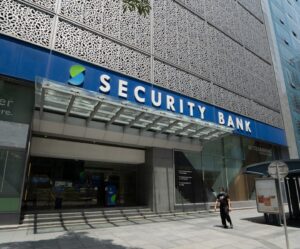
Increased traffic on the Bitcoin (BTC) network has resulted in slower processing times and higher transaction fees, sparking a surge in Bitcoin Layer-2 (L2) development. These L2 solutions aim to enhance Bitcoin’s scalability, lower transaction costs, and introduce virtual machine programmability to the network.
The Bitcoin L2 Lightning Network, for instance, facilitates faster BTC transfers than the Layer-1 network. Moreover, L2 solutions have catalyzed the growth of decentralized finance (DeFi) on the Bitcoin network.
A recent report from crypto exchange Bybit highlights the existence of over 74 Bitcoin L2 solutions, most of which emerged in the past six months. These L2s include sidechains, rollups, and state channels.
Bitcoin Usability Hinges on L2 Infrastructure
Rena Shah, COO of Trust Machines, emphasized the critical role of Layer-2 infrastructure in Bitcoin usability. “For Bitcoin builders, this felt obvious, but we’re finally seeing it play out in real-time,” Shah said. “Most transactions can settle faster and cheaper on the L2, while the Bitcoin L1 focuses on high-value settlements.” Shah believes L2 solutions can unlock immense potential for Bitcoin, making it a viable decentralized base layer for applications.
Bitcoin L2s Exhibit Significant Growth
Daniel Fogg, CEO of Rootstock, reported record-breaking transactions on the Rootstock sidechain. “According to block explorer data, there have been over 13 million transactions on Rootstock, with over 670,000 in the last three months alone,” Fogg said. Rootstock has integrated multiple decentralized applications (dApps) and wallet integrations, including the popular decentralized exchange (DEX) SushiSwap.
L2s Facilitate Liquidity and DeFi Use Cases
Jeff Yin, Founder of L2 solution MerlinChain, sees increasing liquidity across Bitcoin L2s as a key driver for DeFi participation. MerlinChain’s DEX boasts liquidity close to $10 million, with plans to expand significantly. Karan Bharadwaj, CEO of L2 staking network Arithmic, aims to unify liquidity across Bitcoin and Ethereum L2s, simplifying the bridging process and maximizing opportunities across platforms.
Challenges of Multiple L2s
Bharadwaj pointed out challenges like liquidity fragmentation and scalability concerns due to increasing transaction volumes. He advocates for interoperability standards to unify liquidity across L2s. Justin Wolfskehl from The Bitcoin Name System (BNS) highlighted the acceptance issue, noting that only a few L2 solutions will likely achieve mainstream adoption.
Bitcoin L2s Continue to Thrive
Despite these challenges, industry experts remain optimistic about the future of Bitcoin L2s. The new interoperability protocol ZKM plans to launch the “GOAT Network,” a decentralized L2 solution. Additionally, Hamilton will offer tokenized U.S. Treasury bonds on Bitcoin L2 blockchains.
Upcoming updates, such as the “Nakamoto” upgrade on the Stacks L2 solution, promise to reduce transaction times significantly, enhancing the user experience and advancing the BTC L2 ecosystem.






















Comments are closed for this article!